Honeywell HAQ Air Quality Monitor
Hello, Habr! I decided to participate in testing products from the Dadget assortment again, and here is a story about the Honeywell HAQ air quality monitor.
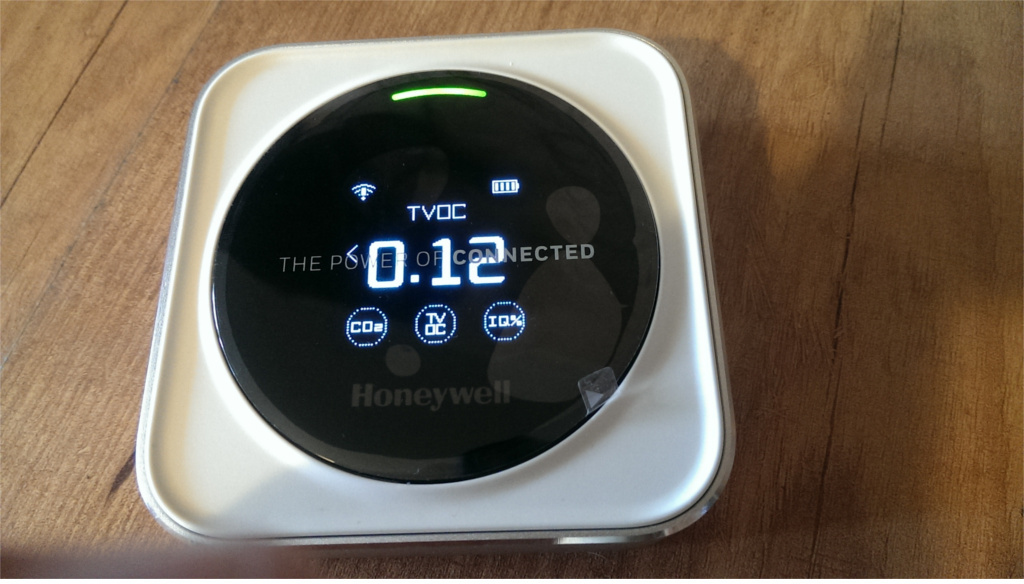
The device’s delivery set includes: a package, a box, instructions, the device itself, shock absorbers for transportation, a Micro USB cable (it is not clear why it is not a Type-C after all).
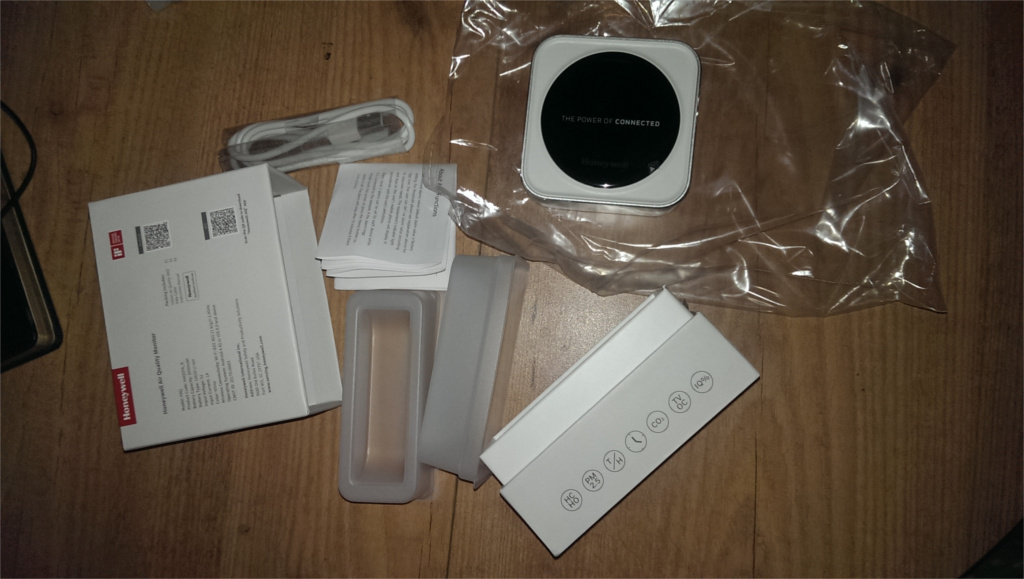
First of all, my hands were combed to drive the device through lsusb, and nothing. From USB, it can only eat. But with “top-level computers”, as the classics say, it can be connected. Only in a different way.
View from two sides:
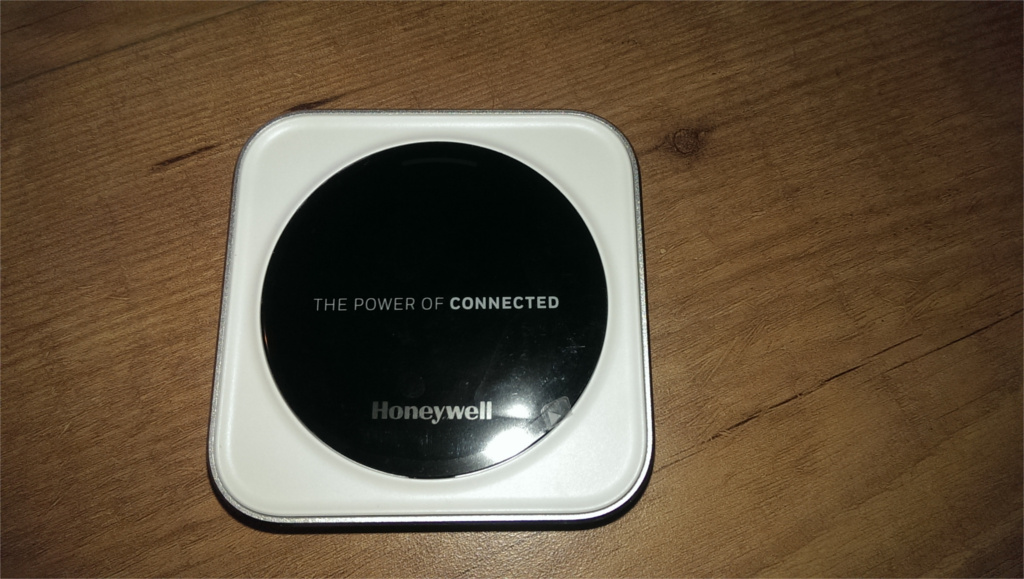
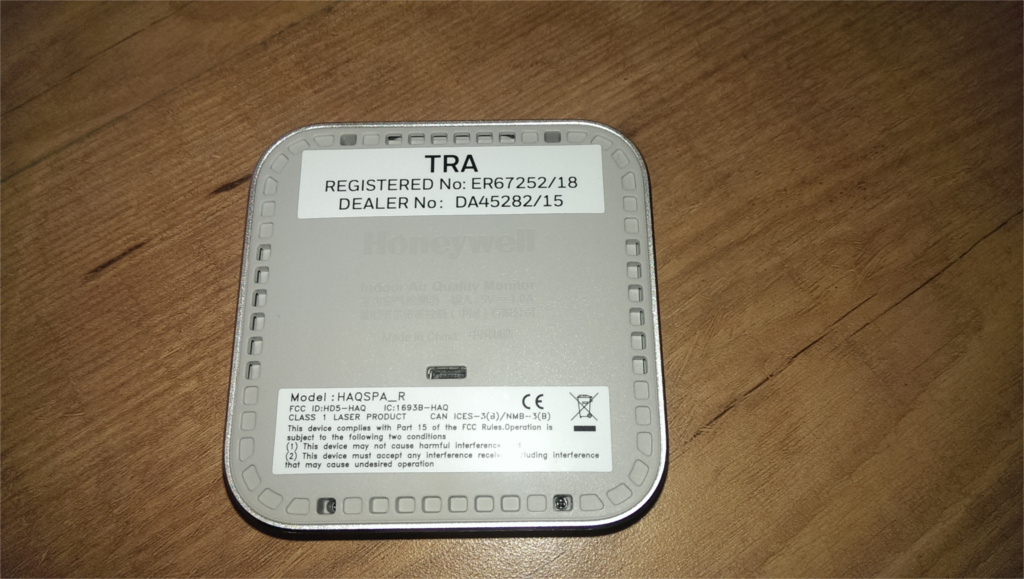
Also, the “class 1 laser product” is not an incandescent lamp for you, as in a carbon dioxide detector .
After charging from a power supply with a load capacity of at least 1 A, the device runs on a built-in battery. At the same time, a very quiet fan rotates continuously in it. There is nothing to cool inside, but the sensors work more efficiently if air is forced through them.
The device’s display organically combines two technologies: one beginning of zero - PMOLED (flickers strongly, but the viewing angle is huge), the other - modern: a capacitive sensor (most likely not a matrix, but from the areas in the places of the screen that you need to detect touches). When shooting, flicker is imperceptible. Above the display is a dual-crystal LED (like ALS331A).
The six measured parameters are divided into two screens, between which you can switch by clicking on the flashing “turn signals”. On each of the screens, you can click on the parameter icon and its value will be displayed.
Particulate matter with a diameter of less than 2.5 microns:

Formaldehyde:

Temperature, lower in small print - humidity:
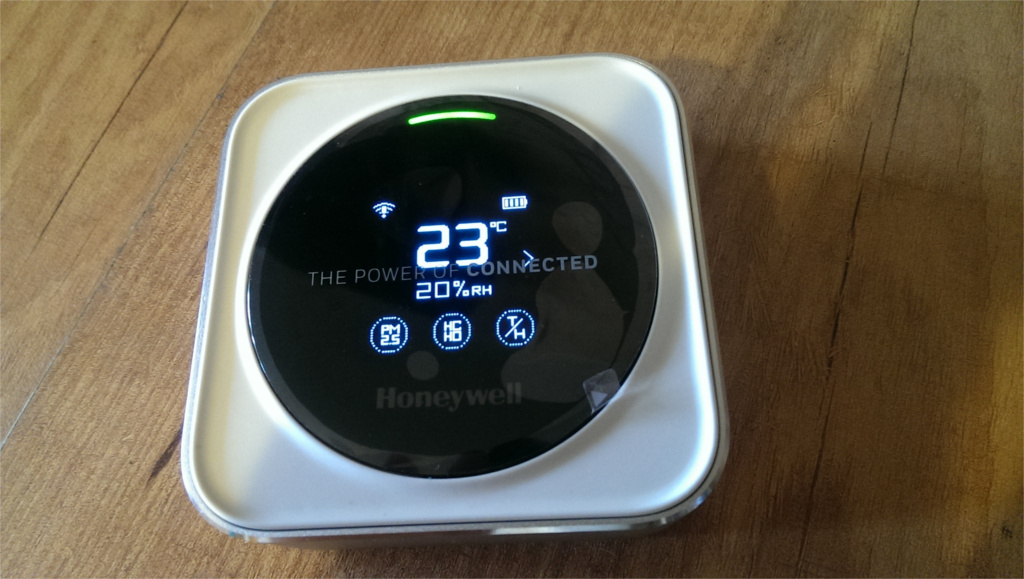
Carbon dioxide:

Volatile organic compounds:

Generalized value, about it - hereinafter:
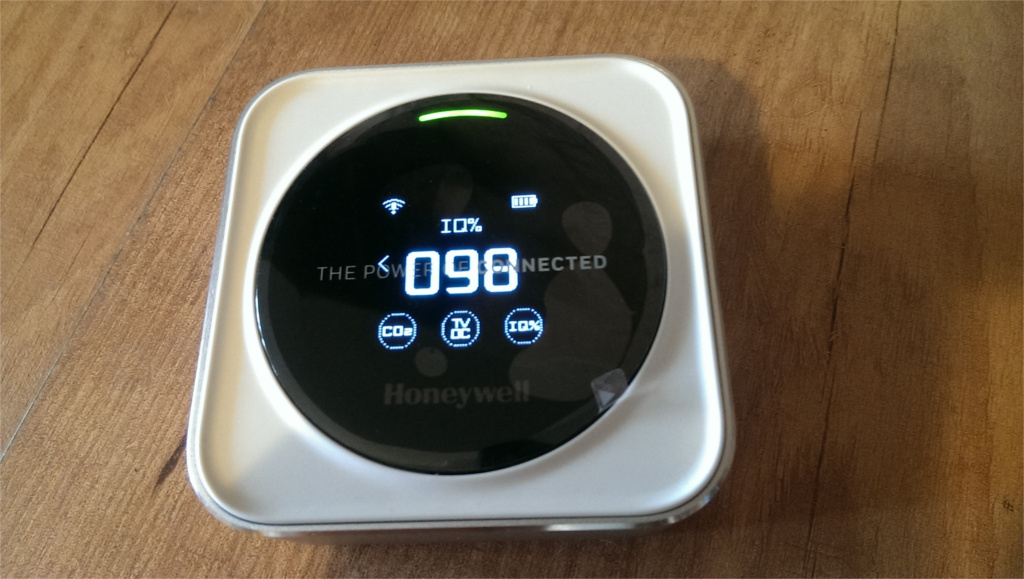
If any of the values takes an undesirable value, the corresponding icon flashes. With prolonged inactivity of the user (he does not press either the top button or the screen), the selected value is displayed in a more concise form:

In this mode, when an exclamation mark appears in the circle below, you can click on the top button and see which icon is blinking.
We turn to the most interesting thing - pairing with a mobile device. We put the application for Android or iOS. To do this, scan the QR code on the back of the box or just find the program called Honeywell IAQ (the device is HAQ, and the application is IAQ).

Application welcome screen:

Registration:

Setting a password:
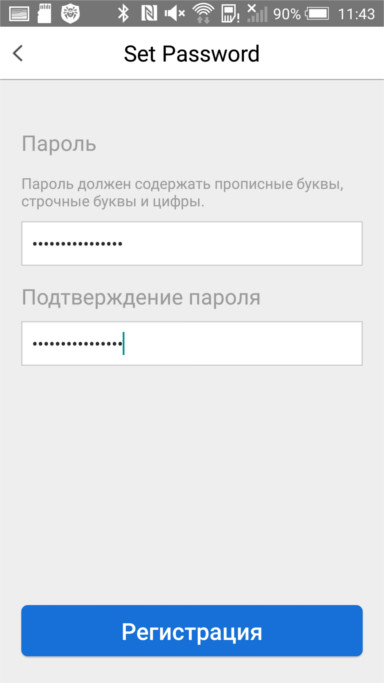
Logging in with login and password:

Add a device - click on the plus:

Next, do what is shown in the following screenshot:
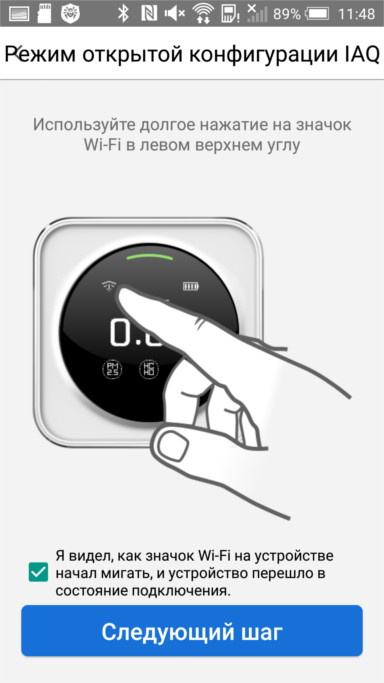
The device will become an access point, but connect to it and try to go to 192.168.0.1 or 192.168.1.1 makes no sense. Go to the next screen:

From an access point, the device will turn into a slave and connect to your router (2.4 GHz only). Now the smartphone or tablet interacts with it through the cloud, and the application will continue to work when connected via a cellular network or other access point. If the manufacturer ever stops supporting the device as outdated, nothing bad will happen - it won’t stop displaying the parameters on the built-in display, it just won’t be so “outgoing” anymore.
After pairing, the WiFi icon looks like this:

It seems that the connection is established, but the data does not go. What happened?


Forcibly terminate the application and start again. It turned out: The

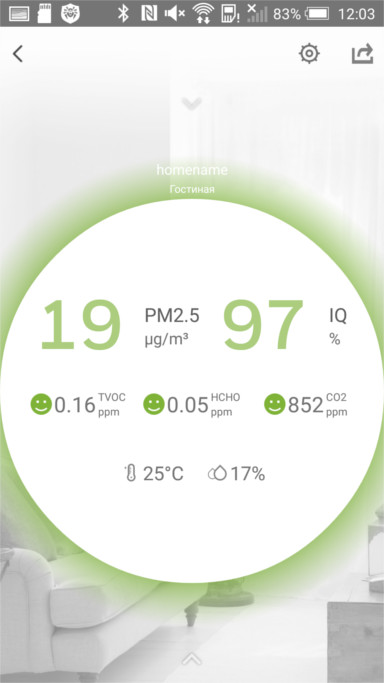
graphs are still empty - the device did not work for long:
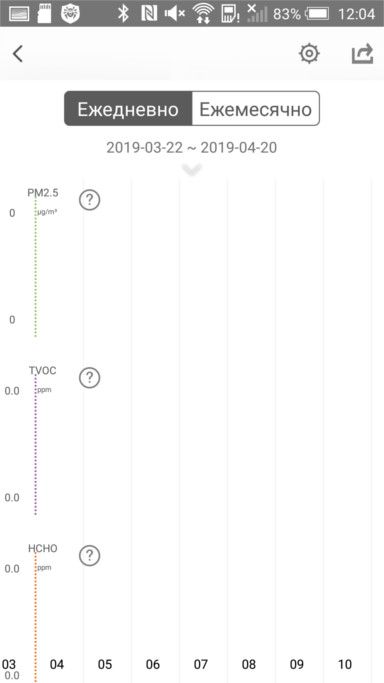
By clicking on the question mark next to the parameter name, you can find out more about it:

A small glitch: you cannot leave the screen using the back button. You have to restart the application again.
There are a lot of settings:

I really liked the ability to independently set the thresholds for switching the colors of the dual-crystal LED:

The brightness of the display is not adjustable, so if it interferes at night, you can set the time interval during which it will be turned off:

The device can be used as an alarm:

Just do not turn it off case a router for the night:

Another function is a stylish watch:
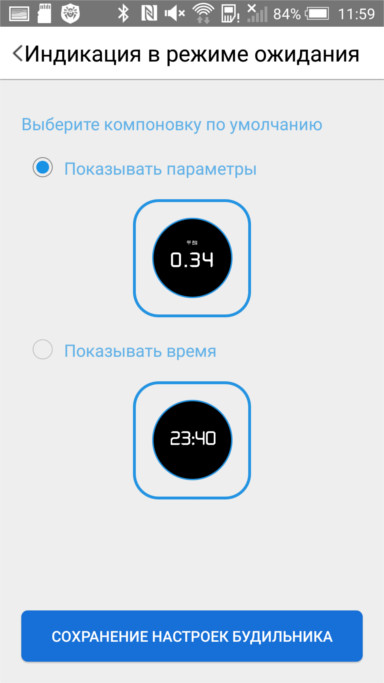
It looks like this: The

application includes instructions, and in it, in particular, a list of the types of measured values:
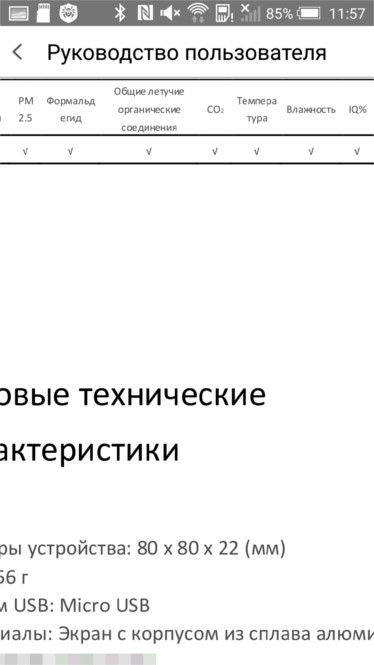
And the ranges of their measurement:
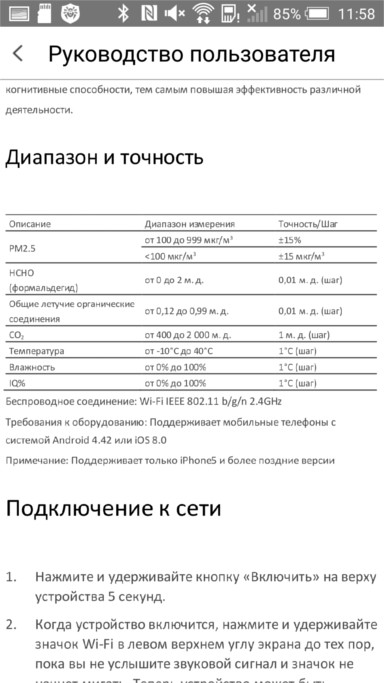
And a separate screen is dedicated to the story of what kind of generalized value it is:

And a few photos of the insides:

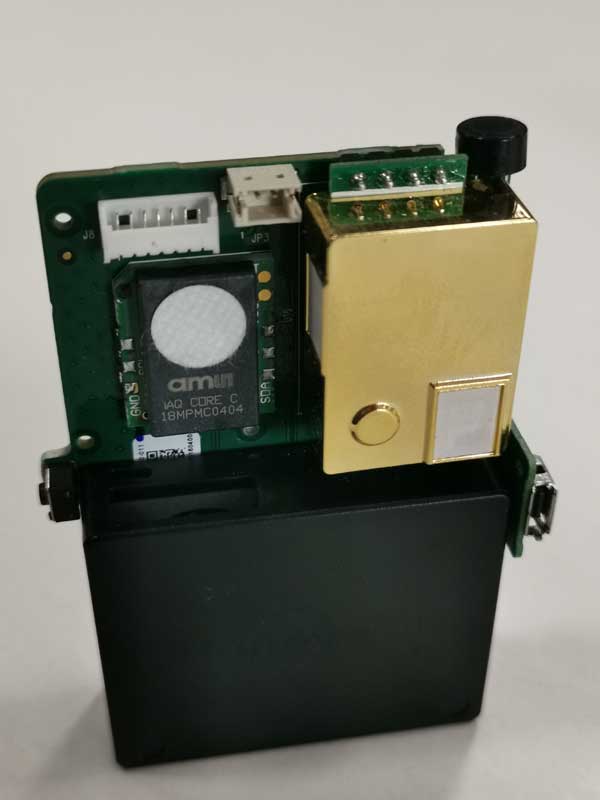
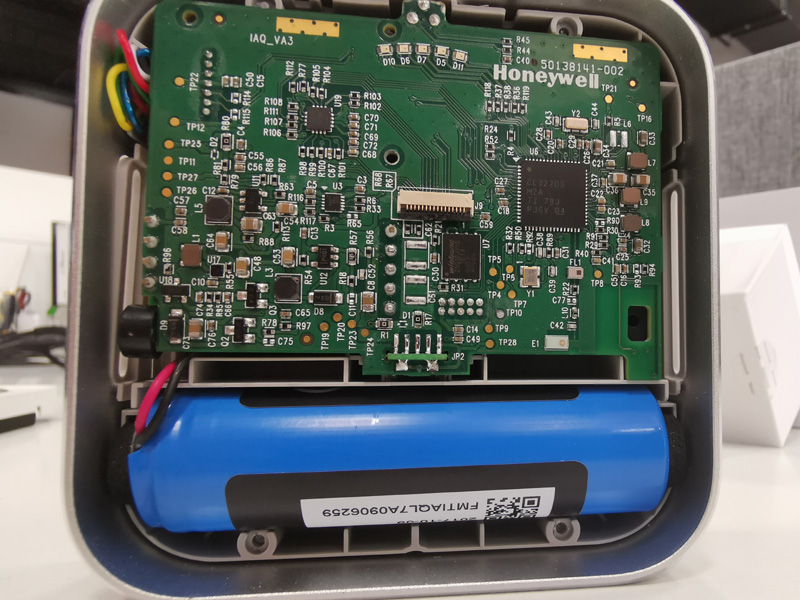
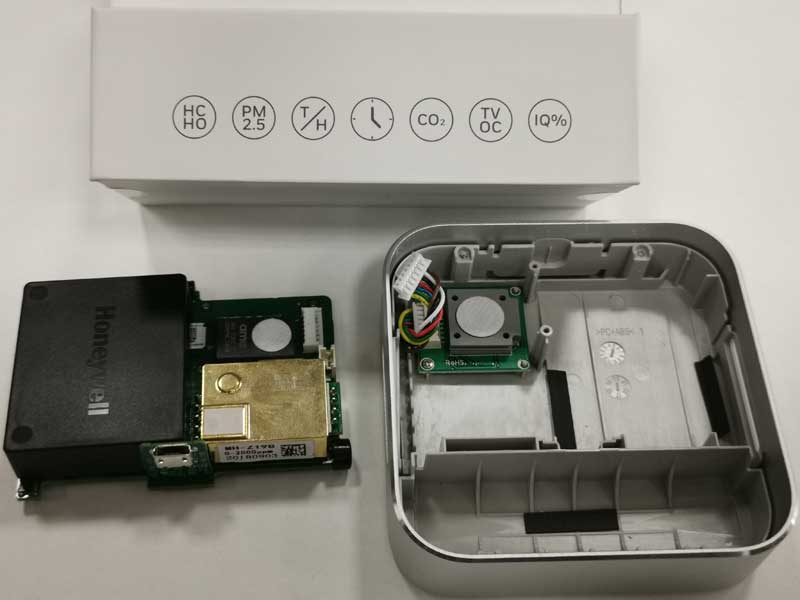
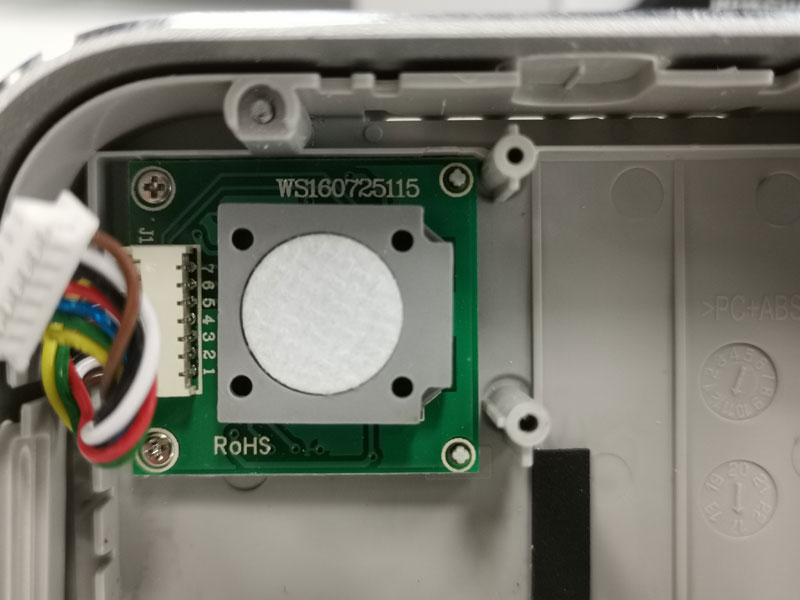
Any competent blogger with a fairly large portfolio can still participate in testing products from the Dadget assortment. With the Honey promo code, you can purchase a device with a 10% discount by clicking on the link . For wholesale purchases and special conditions, write to retail@dadget.ru

The device’s delivery set includes: a package, a box, instructions, the device itself, shock absorbers for transportation, a Micro USB cable (it is not clear why it is not a Type-C after all).

First of all, my hands were combed to drive the device through lsusb, and nothing. From USB, it can only eat. But with “top-level computers”, as the classics say, it can be connected. Only in a different way.
View from two sides:


Also, the “class 1 laser product” is not an incandescent lamp for you, as in a carbon dioxide detector .
After charging from a power supply with a load capacity of at least 1 A, the device runs on a built-in battery. At the same time, a very quiet fan rotates continuously in it. There is nothing to cool inside, but the sensors work more efficiently if air is forced through them.
The device’s display organically combines two technologies: one beginning of zero - PMOLED (flickers strongly, but the viewing angle is huge), the other - modern: a capacitive sensor (most likely not a matrix, but from the areas in the places of the screen that you need to detect touches). When shooting, flicker is imperceptible. Above the display is a dual-crystal LED (like ALS331A).
The six measured parameters are divided into two screens, between which you can switch by clicking on the flashing “turn signals”. On each of the screens, you can click on the parameter icon and its value will be displayed.
Particulate matter with a diameter of less than 2.5 microns:

Formaldehyde:

Temperature, lower in small print - humidity:

Carbon dioxide:

Volatile organic compounds:

Generalized value, about it - hereinafter:

If any of the values takes an undesirable value, the corresponding icon flashes. With prolonged inactivity of the user (he does not press either the top button or the screen), the selected value is displayed in a more concise form:

In this mode, when an exclamation mark appears in the circle below, you can click on the top button and see which icon is blinking.
We turn to the most interesting thing - pairing with a mobile device. We put the application for Android or iOS. To do this, scan the QR code on the back of the box or just find the program called Honeywell IAQ (the device is HAQ, and the application is IAQ).

Application welcome screen:

Registration:

Setting a password:

Logging in with login and password:

Add a device - click on the plus:

Next, do what is shown in the following screenshot:

The device will become an access point, but connect to it and try to go to 192.168.0.1 or 192.168.1.1 makes no sense. Go to the next screen:

From an access point, the device will turn into a slave and connect to your router (2.4 GHz only). Now the smartphone or tablet interacts with it through the cloud, and the application will continue to work when connected via a cellular network or other access point. If the manufacturer ever stops supporting the device as outdated, nothing bad will happen - it won’t stop displaying the parameters on the built-in display, it just won’t be so “outgoing” anymore.
After pairing, the WiFi icon looks like this:

It seems that the connection is established, but the data does not go. What happened?


Forcibly terminate the application and start again. It turned out: The


graphs are still empty - the device did not work for long:

By clicking on the question mark next to the parameter name, you can find out more about it:

A small glitch: you cannot leave the screen using the back button. You have to restart the application again.
There are a lot of settings:

I really liked the ability to independently set the thresholds for switching the colors of the dual-crystal LED:

The brightness of the display is not adjustable, so if it interferes at night, you can set the time interval during which it will be turned off:

The device can be used as an alarm:

Just do not turn it off case a router for the night:

Another function is a stylish watch:

It looks like this: The

application includes instructions, and in it, in particular, a list of the types of measured values:

And the ranges of their measurement:

And a separate screen is dedicated to the story of what kind of generalized value it is:

And a few photos of the insides:





Any competent blogger with a fairly large portfolio can still participate in testing products from the Dadget assortment. With the Honey promo code, you can purchase a device with a 10% discount by clicking on the link . For wholesale purchases and special conditions, write to retail@dadget.ru
